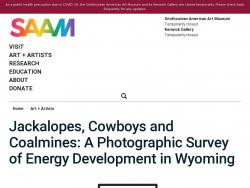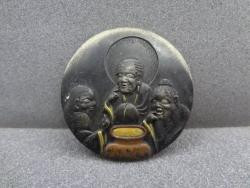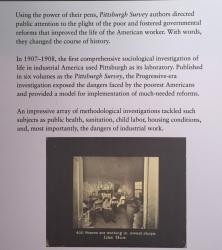Kate Harris
Social Studies teacher
Pittsburgh CAPA
Middle School (13 to 15 years old), High School (16 to 18 years old)
Teacher/Educator
Language Arts And English, Civics, Literature, Cultures, Economics, Social Studies, Geography, Writing, US History, Arts, Other
I'm a history-lover, art fan, and bookworm. I taught high school history (U.S. History and World Religions) for ten years in North Carolina, teach currently in Pittsburgh, PA, and am working to help teachers make the most of this new resource!
Kate Harris's collections
Tools of the Labor Movement
The United States labor movement began in full force during the late 19th century and peaked during World War II. Workers learned that by joining together in unions, they could exert more pressure on employers and the government to protect their rights and improve labor conditions. This collection includes a variety of resources related to the United States labor movement, particularly the various tools and strategies used to create change.
Guiding questions to consider are:
-What rights do workers desire?
-How can labor unions influence employers, government, and the public?
-What tools and strategies are most effective for improving working conditions? Consider: boycotts, picketing, appeals to the media, strikes, walk-outs, and slow-downs.
-How does the public perceive labor unions? How does this impact their results?
-Are women and minorities included in the labor movement? Were they always?
 Kate Harris
Kate Harris
25
Tools for Meditation
Are you interested in meditation? This topical collection includes a variety of tools for meditation, including mandalas, music, prayer beads, labyrinths, and a video of a guided meditation and pranayama (breathing) practice. Web links to additional background information are embedded throughout.
 Kate Harris
Kate Harris
16
Timeline: Causes of the Civil War
<p>This collection includes artifacts, stamps, political cartoons, portraits, and videos representing various long-term and short-term causes of the Civil War. After reviewing the collection, students will sort resources into chronological order, focusing on continuity and change over time. </p><p>Tags: compromise, Civil War, John Brown, Fort Sumter, Ft, Abraham Lincoln, Sumner, Brooks, Taney, Dred Scott, 1850, 1860, secession</p><p><br /></p><p>Additional teaching ideas are listed in the Notes to Other Users section.</p>
 Kate Harris
Kate Harris
30
The Steamboat Arabia
<p style="margin-left:32px;">This collection was made to pair with a learning experience during the November 17th workshop for Pittsburgh teachers working with the Smithsonian Learning Lab. Teachers will visit the Steamboat Arabia exhibit and learn from a Heinz History Center curator about the decisions made and limitations faced when creating an exhibit for visitors to learn from. </p><p style="margin-left:32px;">Both the online collection and the Heinz History Center exhibit explore the question "<strong>How do new innovations in transportation affect American life?"</strong></p><p style="margin-left:32px;">The collection below contains artifacts and images from the Smithsonian collection that might help students and teachers respond to the question above. Suggested scaffolding questions might include:</p><ul><li>Identify the changes in technology and transportation that occurred between 1800-1850.</li><li>How did these new transportation systems impact the movement and interactions of groups of people, the expansion of trade, and cultural life on the frontier?</li><li>How do the items in this collection compare to what was found during the recovery of the Steamboat Arabia?</li></ul>
 Kate Harris
Kate Harris
22
The Smithsonian in World War I
<p>Across the nation, public institutions like museums, universities, and government facilities showed the impact of World War One. Not only did private individuals find their lives changed by enlisting to fight or taking on new "war work," but buildings and public spaces also changed by shifting over to the war cause. This collection reveals how life at the Smithsonian Institution changed in order to support the war effort from 1914-1918 through artifacts and archival materials.</p><p>Questions to consider:</p><p>-<strong>How do Americans sacrifice during wartime? Has it changed over time?</strong></p><p>-How did the Smithsonian Institution and its employees adapt during wartime?</p><p>-What does the experience chronicled here tell us about that of other Americans? What is still missing?</p><p>Tags: WWI, World War One, homefront, war work, Smithsonian, museum</p>
 Kate Harris
Kate Harris
17
The Seventies: A Crisis of Confidence
<p>This is a teaching collection designed to support an inquiry into why the public lost confidence in the government in the 1970s (70s). Topics covered include the economic recession, the Nixon presidency and Watergate, the Ford presidency, the Carter presidency, the Iran hostage crisis, the oil embargo, the Kent State massacre and the Pentagon Papers.</p><p><br /><br /></p><p>Guiding questions:<br /></p><p>-Why did the U.S. public lose confidence in the presidency in the 1970s?<br /></p><p>-What impact did economic crises have on American lives?</p>
 Kate Harris
Kate Harris
14
The 1960s--A Decade Collection
<p>This is a topical collection about American life and politics in the 1960s. Resources in this collection might be helpful to students and teachers working on projects about the decade. It is not meant to be completely comprehensive, but rather includes highlights of the Smithsonian's collection spanning art, popular culture, social trends, leadership, and technology.</p><p>Teachers and students might copy and adapt this collection to suit their needs; highlighting a specific aspect of life in the 1960s and adding annotations and additional resources.</p><p>tags: Sixties, Kennedy, Camelot, civil rights, Vietnam, politics, decade</p>
 Kate Harris
Kate Harris
97
The 1980s: A Decade Collection
<p>This is a topical collection about American life and politics in the 1980s. Resources in this collection might be helpful to students and teachers working on projects about the decade. It is not meant to be completely comprehensive, but rather includes highlights of the Smithsonian's collection spanning art, popular culture, social trends, leadership, and technology.</p><p>Teachers and students might copy and adapt this collection to suit their needs; highlighting a specific aspect of life in the 1980s and adding annotations and additional resources.</p><p>tags: Eighties, Reagan, George H. W. Bush, rap, detente, Vietnam, politics, decade, Cold War, Olympics, boycott, space shuttle, star wars, Reaganomics, trickle-down</p>
 Kate Harris
Kate Harris
42
The Remains at Pompeii
This is a collection of teaching resources that could be used to support a lesson on Pompeii and Mt. Vesuvius as well as life in ancient Rome. Included are artworks picturing Pompeii, archaeological artifacts, and links to "street views" of the ruins as well as magazine articles on the topic.
Some questions to consider are:
-What can we learn about the life of ancient Romans from the ruins at Pompeii?
-What are the strengths and weaknesses of learning from archaeological ruins?
-Why have the ruins at Pompeii continued to fascinate people over time?
 Kate Harris
Kate Harris
12
The Mughal Empire
<p>What is the role of art and culture in the expansion of nations or empires? This collection traces the general history of the Mughal Empire and its influence on Indian art. The Mughals were a dynasty of Islamic leaders who conquered India in the 16th and 17th centuries. Their blend of influences and the stylistic preferences of the emperors created a distinct style. </p><p>Guiding questions to consider are:</p><p>How did the Mughals assert their authority over and create a sense of unity within India?</p><p>Why is art so important to powerful leaders, and how can they influence artistic styles?</p><p>Tags: religion, culture, syncretism, Islam, Muslim, India, Hindu, cause effect, chronology</p>
 Kate Harris
Kate Harris
14
The Military Draft
<p>This collection can be used for a teaching activity on the military draft in the United States and how it has changed over time from the Civil War to the Vietnam War. Students will consider attitudes towards the draft, its effects, and means of avoiding the draft in different eras. What trends or patterns emerge? What changes? Why is the draft no longer in use?</p><p>Tags: conscription, draft, selective service, Civil War, World War I, World War II, WWI, WWII, WW2, Vietnam War, change over time, continuity and change, exemption</p>
 Kate Harris
Kate Harris
23
The Middle Ages: Discover the Story
This collection includes objects and artifacts representing life in the Middle Ages. Students are challenged to write a creative story or narrative based on the objects in the collection, illustrating life at the time. The last two resources in the collection are a worksheet that teachers may use to frame the assignment and a grading rubric for the assignment.
 Kate Harris
Kate Harris
12










